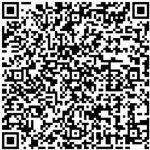Advanced Custom Fields 是一款非常强大的自定义字段插件,允许你自己添加多种形式的自定义字段类型,比如 Image、Checkbox、File、Text、Select、True / False、Link、Textarea 等等,可以集成为一个或多个面板,支持导出字段为 xml 或php代码,还可以集成到主题或插件里。
Advanced Custom Fields is the perfect solution for any wordpress website which needs more flexible data like other Content Management Systems.
- Visually create your Fields
- Select from multiple input types (text, textarea, wysiwyg, image, file, page link, post object, relationship, select, checkbox, radio buttons, date picker, true / false, repeater, flexible content, gallery and more to come!)
- Assign your fields to multiple edit pages (via custom location rules)
- Easily load data through a simple and friendly API
- Uses the native WordPress custom post type for ease of use and fast processing
- Uses the native WordPress metadata for ease of use and fast processing
Field Types
- Tab (Group fields into tabs)
- Text (type text, api returns text)
- Text Area (type text, api returns text with
<br />tags) - Number (type number, api returns integer)
- Email (type email, api returns text)
- Password (type password, api returns text)
- WYSIWYG (a wordpress wysiwyg editor, api returns html)
- Image (upload an image, api returns the url)
- File (upload a file, api returns the url)
- Select (drop down list of choices, api returns chosen item)
- Checkbox (tickbox list of choices, api returns array of choices)
- Radio Buttons ( radio button list of choices, api returns chosen item)
- True / False (tick box with message, api returns true or false)
- Page Link (select 1 or more page, post or custom post types, api returns the selected url)
- Post Object (select 1 or more page, post or custom post types, api returns the selected post objects)
- Relationship (search, select and order post objects with a tidy interface, api returns the selected post objects)
- Taxonomy (select taxonomy terms with options to load, display and save, api returns the selected term objects)
- User (select 1 or more WP users, api returns the selected user objects)
- Date Picker (jquery date picker, options for format, api returns string)
- Color Picker (Farbtastic!)
- Repeater (ability to create repeatable blocks of fields!)
- Flexible Content (ability to create flexible blocks of fields!)
- Gallery (Add, edit and order multiple images in 1 simple field)
- Custom (Create your own field type!)
该插件需要基础的PHP代码编辑能力,你需要修改主题面板文件来显示字段。
下面倡萌将做一个简单的测试演示。
1.在后台插件安装界面搜索 Advanced Custom Fields 即可现在安装,或者下载 Advanced Custom Fields
2.启用插件后,你就可以在左边菜单看到“字段”,进入后点击“新建”,就出现类似下面的界面。
点击“添加字段”,填写和选择相关信息,需要注意的是“字段名称”必须是英文、数字、短横线、下划线组成,不能有空格。比如倡萌添加了“test_text”和 “test_img”两个字段,分别为 文本 和 图像 类型。
显示“位置”为 文章类型 下的 “post”,也就是在文章编辑界面添加这个自定义字段组。
然后“选项”的“样式”设置为“标准MetaBox”,保存发布。
3.新建一篇文章,就可以在内容编辑器下方看到如下界面,就是倡萌刚才添加的字段(图中已经选择了图片)
4.重点就是如何调用这两个字段的值。看的懂英文的就自己查看下官方的教程 http://www.advancedcustomfields.com/resources/。
下面只简单介绍下 the_field() 和 get_field() 函数。前者是直接输出字段值,后者是获取字段值以供其他函数调用。
比如,我们直接输出刚才倡萌添加的文本字段 test_text,可以使用下面两种方式打印:
<?php //直接打印输出字段的值
the_field('test_text'); //使用 echo 打印输出
echo get_field('test_text'); ?>综合下,倡萌要在文章底部输出刚才添加的 test_text 和 test_img 这两个字段,可以编辑主题的 single.php 文件,找到 the_content(); 在下方添加:
<?php
if (get_field('test_text')) {
echo '<p>输出文本字段:'.get_field('test_text').'</p>';
} if (get_field('test_img')) {
echo '<p>输出图像字段:<img src="'.get_field('test_img').'" /></p>';
}
?>查看刚才的文章,就可以看到输出结果如下:
Creating the Advanced Custom Fields

Adding the Custom Fields to a page and hiding the default meta boxes

The Page edit screen after creating the Advanced Custom Fields

Simple and intuitive API. Read the documentation at: http://www.advancedcustomfields.com/resources/
安装:
- Upload 'advanced-custom-fields' to the '/wp-content/plugins/' directory
- Activate the plugin through the 'Plugins' menu in WordPress
- Click on the new menu itme "Custom Fields" and create your first Custom Field Group!
- Your custom field group will now appear on the page / post / template you specified in the field group's location rules!
- Read the documentation to display your data:




